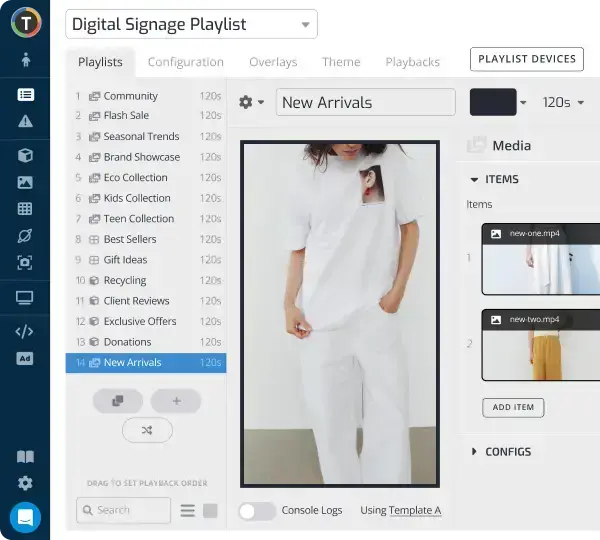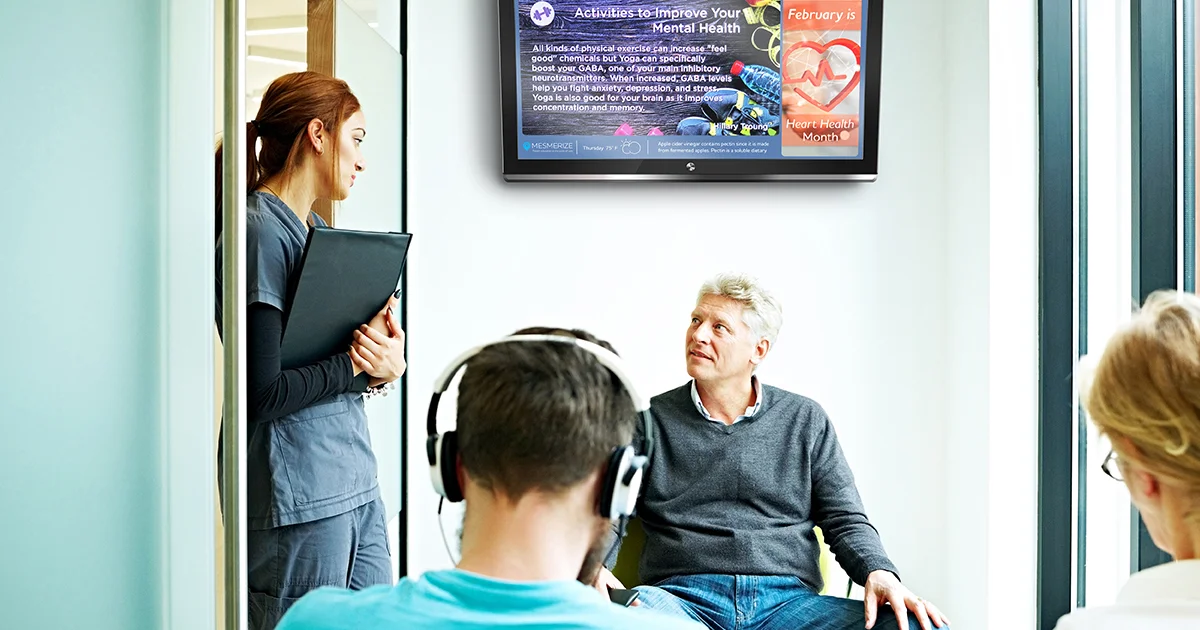Schools Reopening - The Importance of Technology in Education
WRITTEN BY: TelemetryTV, 08-24-2020

Due to COVID-19, schools have had to adopt innovative teaching methods and mediums to get the job done. But with the help of technology like digital signage, remote collaboration apps, and other tools that allow remote learning, it doesn’t need to be a one or the other approach. Classes can begin in-person as usual, and if complications arise, all sessions and communication can be done online, allowing everyone to learn from home.
In a time when safety is everyone’s highest priority, these tools are making a relatively normal education possible. But just how important is technology in education? In this article, we’ll take a closer look at the positive effects of technology in the classroom and how technology is affecting education as a whole during the COVID era.
How technology is becoming the centrepiece of schools reopening
Without national guidelines on reopening, schools across the country are tasked with putting their own protocols in place. Plans that focus on staff and student safety include following:
- Remote Learning - With the health of students and staff at stake, remote learning eliminates the high contact risks of in-person instruction.
- Contact Tracing Apps - There are apps that track the movements of afflicted or exposed people and alert others of those locations. In areas where students and staff come and go from campus, using contact tracing apps has alleviated some of the fear of infection. Software companies have developed apps for schools and other organizations. Universities like Columbia and Duke are already asking their student body to download and use them.
- Communication - Particularly on large campuses, communication through technology is beneficial for public health updates. For example, digital signage is a great tool for delivering information. Also, apps that can be downloaded on students’ mobile devices allow them to ask symptom questions.
- Facial recognition and AI – In Las Vegas, the private K-12 Meadows School aims to keep students safe using artificial intelligence. In theory, the AI will read the students temperatures upon arrival, flagging those with elevated readings. They will then have their temperature retaken before deciding on a course of action. Another school in Ohio plans to implement a wearable, electronic beacon which will aid social distancing and contact tracing efforts.

Positive Effects of Technology in Education
Introducing tech to classrooms is hardly a new revelation. And the benefits of technology in the classroom are well documented. It simplifies the learning experience, making it more manageable and saving off-campus students the commute. On-campus students don’t even need to leave their dorms.
Remote learning benefits both students and teachers in different ways. Being internet natives, students today are more comfortable using technology as a learning tool than any generation before.

That level of comfort allows students to stay engaged, retain information, and ask teachers for help without feeling embarrassed or ashamed. Teachers in turn understand each student’s needs more clearly, strengthening their relationship and enabling them to offer a learning experience that meets their needs.
Some campuses are opting for a half in person, half online learning approach while others are choosing to remain closed. The technology is set and ready to use with some companies. Like Actuate, whose artificial intelligence programs are already being installed in schools. Likewise, cloud-based digital signage solutions and remote working collaboration apps made by TelemetryTV are also ready to be implemented in schools and workplaces around the country.
Some campuses have implemented non-invasive social distancing AI and body temperature readers. These are usually in the form of hands-free digital kiosks that operate automatically, giving readings in seconds.
When it comes to higher education, earning a degree or certification is easier than ever due to online classes. It levels the academic playing field, allowing anyone with a reliable internet connection and determination to get an education.
Digital Signage and Education
Digital signs have been a mainstay on campuses around the world for years now, but their role is currently more important than ever. Digital signage does a lot more than offer information to passersby. It allows principals, superintendents, school boards, students, teachers and parents to share key information with large groups, focus messaging, curtail information to best suit its audience, grab attention when it’s needed most, provide safety alerts, and more, all while saving people time in the process.

Digital signs can be placed in lobbies, cafeterias, hallways, and even in classrooms to be used as tools to deliver all kinds of information. Things like wayfinding, digital directories, digital menu boards, bulletin boards, overhead signage, and digital signs for in-class learning are all common examples. With the coronavirus pandemic, digital signs can be used to direct, instruct, and remind students to adhere to safety protocols.
From reminding students about social distancing standards to instructing them on what to do before entering a building in order to keep themselves and others safe, digital signs are the ideal tool to get the message across. They provide concise, eye-catching content that is virtually impossible to ignore as students approach them.
These methods are effective not only in schools and on college campuses, but in businesses and buildings around the world. That’s because outside of getting all things done remotely, using technology like digital signage is the best thing we have to inform people on how to mitigate the spread of COVID.
How to get started with digital signage
Getting a digital bulletin board—or digital signage in general—up and running in your school or university is simple and much less expensive than you might think these days.
Here’s a quick rundown of everything you need to get started:
1. Sign up for a free trial of TelemetryTV
Finally, your school will need to sign up for a monthly subscription to a cloud-based digital signage solution. Most of the best cloud-based platforms offer a wide range of useful apps, features, and capabilities for schools that make managing a digital bulletin board and creating content super easy tasks.
2. Choose a screen
There are two hardware decisions you’ll need to make before launching a digital bulletin board in your school. The first is selecting the right digital signage display. The type and size of the display your school will need depends on a variety of factors—such as use location, viewing angles, brightness, and use case. For more help, check out our guide to picking the right digital signage display and our top six screens for digital signage currently on the market.
3. Select a media player
The next part of the hardware equation is picking the right media player. Put simply, a media player is the device that will power content to your digital signage displays. Processing power and OS preferences are two of the primary factors in choosing a media player that is right for your digital signage needs. For more help, check out our guide to the best digital signage players for 2020











